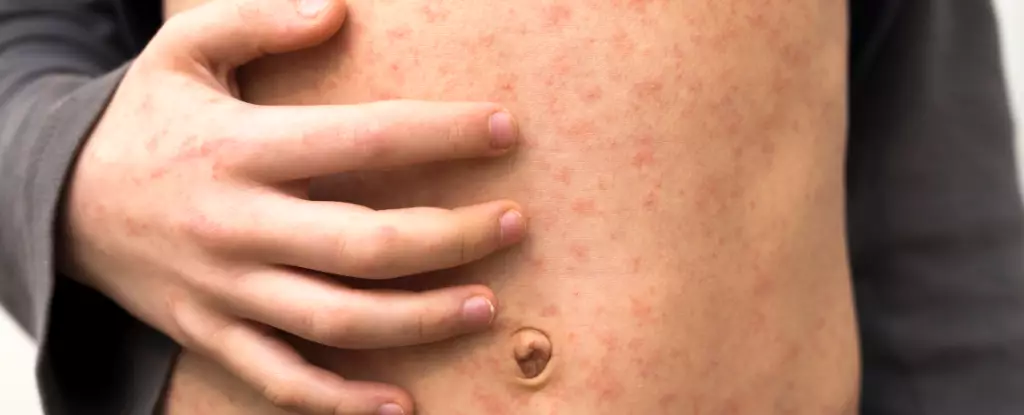A disconcerting measles outbreak, which initiated in West Texas in late January 2025, is rapidly escalating. With confirmed cases surpassing 400 in Texas and over 50 in the neighboring states of New Mexico and Oklahoma by the end of March, the crisis raises alarms about a potential propagation of this perilous disease across the United States. While public health authorities currently report these figures, experts speculate that the actual count may be substantially higher, as infected individuals continue to seek treatment across various transit systems, from planes to trains, and even at healthcare venues. This reality should not only concern health officials but also the general populace—measles is not merely a childhood illness, nor is it something to underestimate.
The Hidden Dangers of Measles
In 2025 alone, an alarming 14% of individuals diagnosed with measles required hospitalization, a number that is particularly concerning given the dramatic 40% hospitalization rate recorded in the previous year. This stark contrast underscores the severity of measles, which can inflict critical damage to various systems in the body. The specter of respiratory failure looms large as the virus attacks lung cells, with pneumonia being an insidious complication for many infected individuals. It’s essential to highlight that the virulence of measles, characterized as one of the most contagious diseases globally, means that unvaccinated individuals are at a high risk of contracting the infection—one infected person can affect 90% of those around them.
Vaccine Effectiveness: An Unmatched Shield
Despite the threat that measles poses, it is also essential to recognize the pivotal role of vaccination. The two-dose measles vaccine regimen boasts a remarkable 97% efficacy rate in thwarting the virus’s invasion. This vaccination success story hinges on nearly six decades of public health efforts, leading many to falsely perceive measles as an outdated concern, relegated to mere childhood illnesses characterized by fever and rashes. However, a deeper understanding of measles’s pathological mechanisms reveals the grim reality: the consequences of infection extend far beyond the skin, posing lethal risks to the respiratory and nervous systems.
Mechanisms of Infection and Complications
Upon entering the body, the measles virus binds to specific surface proteins of cells in the upper respiratory tract and lungs. This infiltration results in the destruction of these cells, with lethal consequences. As the virus replicates, it invades immune cells, which facilitate its spread throughout the lymphatic system and ultimately across the body. Much of what lands measles patients in hospitals stems from the damage inflicted on lung tissue, leading to increasingly severe forms of pneumonia that can develop in approximately 5% of infected children, becoming the leading cause of death from measles.
Equally alarming is the virus’s capacity to infiltrate the central nervous system and induce damaging inflammation, potentially leading to acute brain damage. This can occur directly during the initial infection or manifest as encephalitis weeks later. Careful consideration must also be given to subacute sclerosing panencephalitis (SSPE), a rare but fatal condition that affects roughly 1 in 25,000 people who contract measles. This progressive neurological disorder can emerge years after recovery from measles, a grim reminder that one may not entirely escape the virus’s latent dangers.
The Need for Continued Awareness and Action
Unfortunately, awareness surrounding the severity of measles remains insufficient among the general public, particularly for those under 50 years old who may have never directly witnessed the virus’s devastation. The false narrative that measles is merely a benign childhood disease can encourage vaccine hesitancy and lower vaccination rates, ultimately placing communities at risk for another surge. It is imperative that educational efforts intensify, emphasizing not only the history of vaccination successes but also the compelling need for individuals to be vaccinated to protect both themselves and vulnerable populations.
Recent studies indicate that children with measles have compromised immune responses, diminishing their ability to fend off other pathogens, a counterproductive reality many have yet to grasp. As researchers explore antibody therapies to mitigate severe measles cases, it remains evident that immunization is our most effective strategy to prevent this effectively avoidable yet perilous disease. The spirit of public health requires vigilant commitment and proactive measures to ensure that history does not repeat itself as complacency breeds vulnerability in our communities.


Leave a Reply